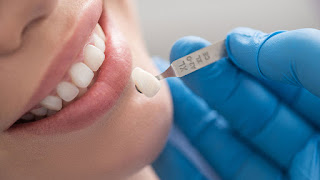Why Wisdom Teeth Removal is Required ?
Wisdom teeth, also known as third molars, are the last set of teeth to emerge, usually between ages 17 to 25. While some people have enough space in their jaw for these teeth to grow properly, many experience problems that require removal. The Family Smiles Dental is suitably located at 1011 N Hwy 77, Ste 105, Waxahachie, is dedicated to the removal of wisdom teeth. Our state of the art facilities are purpose built with the latest technology and for any type of Dental Care dentist near you for Dental Check up and any type of Dental Problem .
Reasons for Wisdom Teeth Removal
1. Impacted Wisdom Teeth
The most common reason for extraction.
When the tooth does not fully emerge due to lack of space, it remains trapped (impacted) under the gum or in the jawbone.
Types of impactions:
Soft tissue impaction: The tooth is covered by gum tissue.
Partial bony impaction: Part of the tooth is visible, but the rest is stuck in the jawbone.
Complete bony impaction: The tooth is entirely buried in the jawbone.
2. Pain and Discomfort
Impacted or improperly erupted wisdom teeth can cause persistent pain in the jaw, ear, or head.
The pain may worsen when chewing or opening the mouth.
3. Crowding of Other Teeth
Wisdom teeth can push against other teeth, causing misalignment or crowding.
This is especially concerning for people who have undergone braces or Invisalign, as it can undo orthodontic work.
4. Infection and Gum Disease (Pericoronitis)
A partially erupted wisdom tooth can trap food and bacteria, leading to infection and inflammation (pericoronitis).
Symptoms include pain, swelling, bad breath, and difficulty opening the mouth.
5. Tooth Decay (Cavities)
Wisdom teeth are located far back in the mouth, making them hard to clean properly.
This increases the risk of plaque buildup, cavities, and gum infections.
6. Cysts and Tumors
In rare cases, impacted wisdom teeth can lead to cysts (fluid-filled sacs) or tumors in the jawbone.
These can damage adjacent teeth, nerves, and bone, requiring surgery.
7. Sinus Issues
Upper wisdom teeth are close to the sinus cavities.
When they grow in, they may put pressure on sinuses, causing pain, congestion, and sinus infections.
Wisdom Teeth Removal Process at a Dental Clinic
1. Consultation and X-Ray
The dentist takes an X-ray or 3D scan to check the position of the wisdom teeth.
Based on the evaluation, they decide whether removal is necessary.
2. Anesthesia
Local anesthesia: Numbs the area (patient remains awake).
Sedation anesthesia: Patient is relaxed but semi-conscious.
General anesthesia: Used for complex cases (patient is fully asleep).
3. Tooth Extraction
Simple Extraction: If the tooth is fully erupted, it is removed like a regular tooth.
Surgical Extraction: If the tooth is impacted, the dentist makes an incision in the gum, removes bone, and extracts the tooth in pieces.
4. Stitches & Recovery
The area is stitched if needed, and gauze is placed to stop bleeding.
Recovery takes a few days to a week, with swelling and mild discomfort .
Call us at +1-972-351-9110 or visit familysmilestx.com/ to schedule your appointment.
Find us at:
- 1011 N Hwy 77, Ste 105
- Waxahachie, Tx.




Comments
Post a Comment